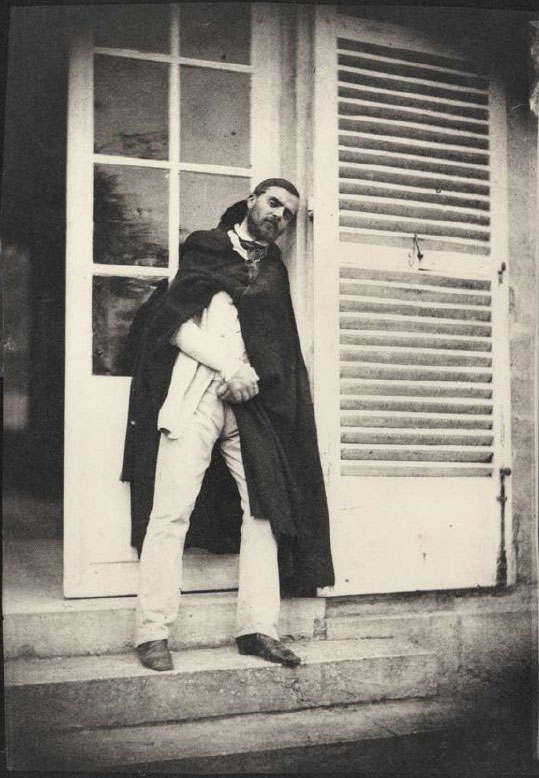- Relief printing
- Intaglio and planographic printing
- Color printing
- Bits and pieces
- Early photography in silver
- Non-silver processes
- Modern photography
- Color notes
- Color photography
- Photography in ink: relief and intaglio printing
- Photography in ink: planographic printing
- Digital processes
- Where do we go from here?
The Paper photograph process

Salted-paper negative. Photographer unknown. Portrait of a man. c. 1850. (Printed by Richard Benson, 1970). 9 x 6 1/4" (22.7 x 16 cm). The Museum of Modern Art, New York. Gift of Richard Benson.
Compared to the sharp daguerreotype image, the image carried by a paper negative is very rough, because it is embedded in the paper’s fibers. This modern print from an early paper negative shows that its descriptive power is nonetheless formidable. Because they are cheaper and easier to handle, paper prints typically are larger than most daguerreotypes. The negative from which this print was made was produced with salted-paper. The print, made in the 1970s, is a platinum print.
The silver compound most commonly used in early photography was silver chloride, which involves an interesting technical problem in that it is completely insoluble in water. You cannot make a solution of silver chloride and coat it on a sheet of paper, no matter how hard you try. The way around this problem was to coat the paper with a salt solution—perhaps even using plain old table salt—that had a small amount of gelatin mixed in as a binder. Once that coating was dry, a second coating, of a solution containing silver nitrate, was put on the sheet. The moment the silver nitrate and the salt came into contact they produced silver chloride, and because the salt was evenly coated, the silver chloride was as well. This is the origin of the term “salted-paper.”

